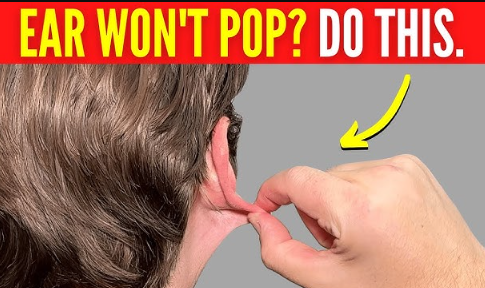BOURSESSENEGAL – Many people experience clogged ears at some point in their lives. Whether it’s due to allergies, a cold, or pressure changes, the feeling can be uncomfortable and even painful. If you’re wondering how to unclog ears effectively, this guide will provide you with practical methods and tips to relieve the pressure and restore your hearing.
Understanding the Causes of Clogged Ears
Common Reasons for Ear Congestion
Before diving into how to unclog ears, it’s essential to understand the reasons behind the blockage. Clogged ears often occur due to:
- Eustachian Tube Dysfunction: This tube connects the middle ear to the back of the throat. When it fails to open properly, pressure builds up.
- Earwax Buildup: Excessive earwax can block the ear canal, leading to a feeling of fullness.
- Infections: Conditions like sinus infections or colds can cause inflammation and fluid buildup in the ears.
- Allergies: Allergens can cause swelling in the nasal passages and Eustachian tubes, resulting in clogged ears.
Recognizing these causes can help you choose the best method to relieve your discomfort.
How to Unclog Ears: Effective Techniques
1. Swallowing and Yawning
Swallowing and yawning are simple yet effective techniques for relieving ear pressure. When you swallow, the muscles around the Eustachian tubes activate, allowing them to open. Try these methods:
- Drink Water: Take small sips of water or chew gum.
- Yawn Regularly: This can also help open the Eustachian tubes.
2. The Valsalva Maneuver
The Valsalva maneuver is a common technique to equalize ear pressure. Here’s how to do it:
- Close your mouth and pinch your nostrils shut.
- Take a deep breath and gently exhale while keeping your mouth closed and nostrils pinched.
- You should hear a pop or feel a release of pressure.
This technique can effectively help you unclog your ears, especially during flights or after swimming.
3. The Toynbee Maneuver
Similar to the Valsalva maneuver, the Toynbee maneuver can also relieve ear pressure. Here’s how it works:
- Pinch your nose shut.
- Swallow while keeping your nose pinched.
- You should feel the pressure release in your ears.
4. Steam Inhalation
Inhaling steam can help relieve clogged ears, especially when congestion results from a cold or allergies. Here’s a simple method:
- Boil water and pour it into a bowl.
- Drape a towel over your head and lean over the bowl, inhaling the steam for 10-15 minutes.
- This helps to loosen mucus and may relieve pressure in your ears.
5. Warm Compress
Applying a warm compress can help soothe discomfort and promote drainage. Here’s how to do it:
- Soak a clean cloth in warm water and wring it out.
- Place it over the affected ear for 10-15 minutes.
- The warmth can reduce inflammation and relieve pressure.
6. Use of Ear Drops
Over-the-counter ear drops can help soften earwax, making it easier to remove. Follow these steps:
- Follow the instructions on the package for proper application.
- Use the drops as directed, usually allowing them to sit in the ear for a few minutes.
- Afterward, gently flush the ear with warm water using a bulb syringe, if recommended.
7. Nasal Decongestants
If allergies or a cold cause your clogged ears, nasal decongestants can help. These medications reduce swelling in the nasal passages and Eustachian tubes, allowing for better airflow. Consider the following:
- Oral Decongestants: Medications like pseudoephedrine can help relieve nasal congestion.
- Nasal Sprays: Saline or medicated sprays can provide immediate relief.
8. Stay Hydrated
Staying hydrated can also help prevent clogged ears. When your body is well-hydrated, mucus remains thin and easier to drain. Aim to drink at least 8 cups of water daily, especially during allergy seasons or when you have a cold.
When to See a Doctor
Recognizing Serious Symptoms
While clogged ears are often manageable at home, there are times when you should consult a healthcare professional. Seek medical attention if you experience:
- Severe pain or discomfort
- Persistent or worsening symptoms
- Discharge from the ear
- Hearing loss that doesn’t improve
- Symptoms following an injury
These could indicate an infection or other serious condition that requires medical intervention.
Additional Tips for Ear Care
1. Avoid Cotton Swabs
Many people use cotton swabs to clean their ears, but this can push wax deeper and worsen the clogging. Instead, clean only the outer ear with a damp cloth.
2. Protect Your Ears
When swimming or showering, consider using earplugs to prevent water from entering the ear canal. This can help avoid infections and maintain ear health.
3. Manage Allergies
If allergies contribute to your ear congestion, work with a healthcare provider to develop an effective allergy management plan. This may include medications or lifestyle changes.
Conclusion: Regain Comfort in Your Ears
Learning how to unclog ears can make a significant difference in your comfort and well-being. By understanding the causes and applying the effective techniques outlined above, you can relieve ear pressure and restore normal hearing. Remember to stay hydrated, practice good ear hygiene, and consult a healthcare professional if symptoms persist.
Take control of your ear health today. Implement these tips and techniques to ensure clear and comfortable ears, allowing you to enjoy everyday activities without the distraction of ear congestion.
This comprehensive guide provides valuable insights into unclogging ears while effectively engaging the reader. If you need specific adjustments or additional information, feel free to let me know!
REFERENCE : https://www.health.com/



